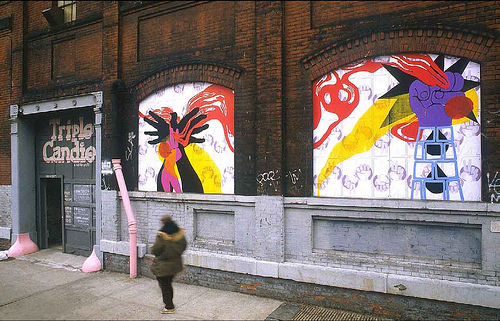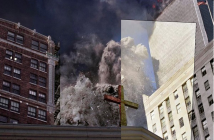While editing the article "How To Start And Run An Alternative Gallery Space" by Big RED publisher Matthew Nash in issue #118, editor Micah Malone proposed:
I would love a piece that talks more about "non commercial" art and its distinction from "art that doesn't sell". If only because the type of art that thrives in alternative spaces must be somehow different from the commercial galleries, and that difference, I think, should be bigger than simply not being ready for commercial status.
This launched an email conversation between Malone and Nash, edited for readability below. Please add your thoughts in the comments.
MN: Micah, I agree that non-commercial art and art that can't sell are two different categories, but how does an alternative gallery differentiate? Do they do it by the art they show, or the audience they cultivate, or some other strategy? Do they need to consistently promote one type of work over the other?
MJM: It is a tricky balance. What I find problematic is the idea of non-profit spaces being used as "incubator" spaces that "graduates" artists to commercial spaces. This model just never produces a lasting art that is "non-commercial." Perhaps it is also useful to note that alternative spaces are often just individuals showing work they like without a real expectation or desire to sell anything (and funding it in "alternative" ways). One thing I was getting at in my email to you is that there is often very little difference in what commercial spaces and non-profit spaces show. In part this is because commercial galleries have found they can sell, or it helps their respectability, if they show installation, performance, large sculptures, and other things that appear difficult to sell. I think the difference has to come in the programming. How non-profit spaces and alternative spaces approach exhibition programming has to be fundamentally different from how commercial galleries do. The best example is Triple Candie in Harlem. Their program was truly alternative, and at times, didn't even really involve art. They used the concept of an exhibition space to promote ideas about the status of artists and the politics of the art world.
MN: Perhaps it is a problem with how this idea of an "incubator" space has been implemented, or fostered by the organizations that fund them. I think that there should be multiple kinds of "incubation" going on simultaneously. There should be support of artists who are getting started and whose work is immature, but there should also be support for artists whose work is established but need a space to experiment and try out new ideas. This is the usual discussion around "incubator" spaces.
But I think the other important function they serve is to foster new kinds of conversations around art, and "incubate" new ideas and audiences who expand the broader art culture of a city or region. This is the reason, more than any other, that I would like to see a resurgence in alternative spaces -- because they have the potential to advance the intensity and diversity of ideas around art. Triple Candie was a great place for that, because they were mostly interested in promoting ideas, and dedicated to building an audience for those ideas. That kind of "incubation" is necessary to make any art culture advance and not get mired in the same stale ideas and discussions.
MJM: I agree with your concept of "incubation" in so far that it can intensify the dialog in their respective regions. Triple Candi in Harlem, Rocksbox in Portland, OR, the now defunct Art Interactive in Cambridge, MA all did/do this in their own way. However, I question whether spaces should cater to artists getting started whose work is immature. Virtually all of the art schools have hallway galleries, student dedicated project spaces, open studios for grad students, etc. I find these spaces more than adequate to allow burgeoning artists to find their footing. It is too easy to say that students and young artists have good ideas simply because they are young, yet it seems this is the programming goals of so many alternative spaces, which leads to lazy programming. In my estimation anyway, the work is so often easy to dismiss, yet the space can go to the fallback position of "We're showing the future" or, it is all about "experimentation." This default position leads to commercial incubation, which simply weeds the most promising artists from the fray. Ultimately, alternative and non-prof spaces need to program with a distinct point of view and "young art" is too often the point of view that we end up seeing.
Continue the discussion in the comments. Do you think alternative space galleries should focus more on building the careers of young artists, or on promoting ideas that are not necessarily commercial? Are there other options?
"How To Start And Run An Alternative Gallery Space" by Matthew Nash in issue #118
Image found on Flickr.



